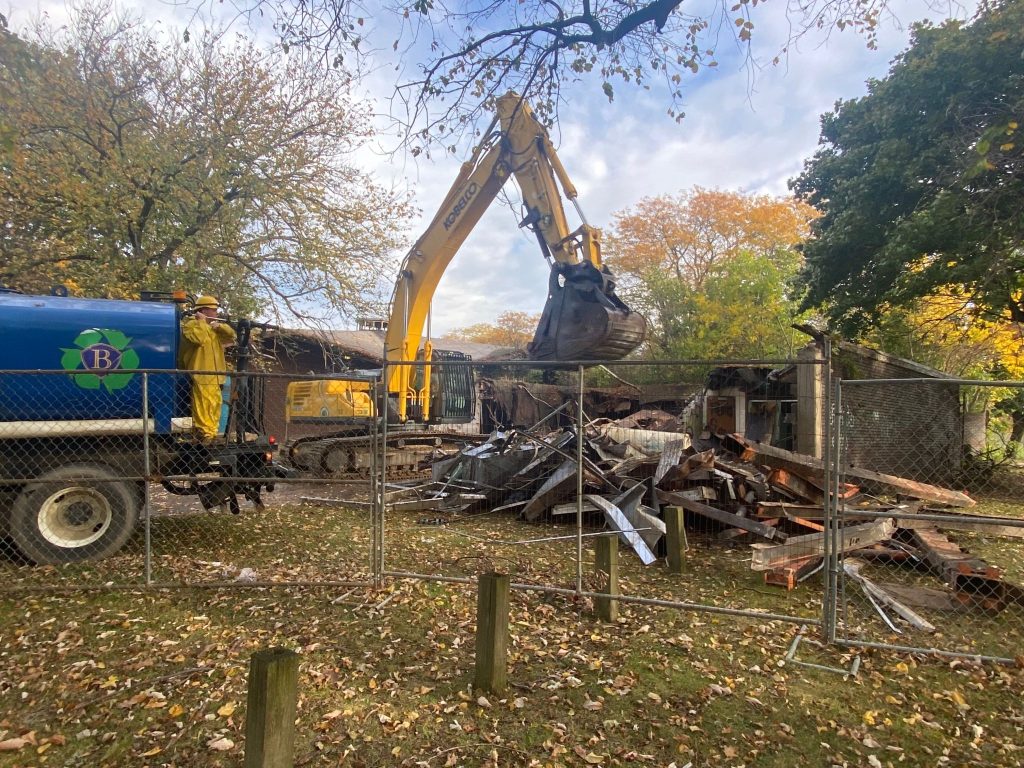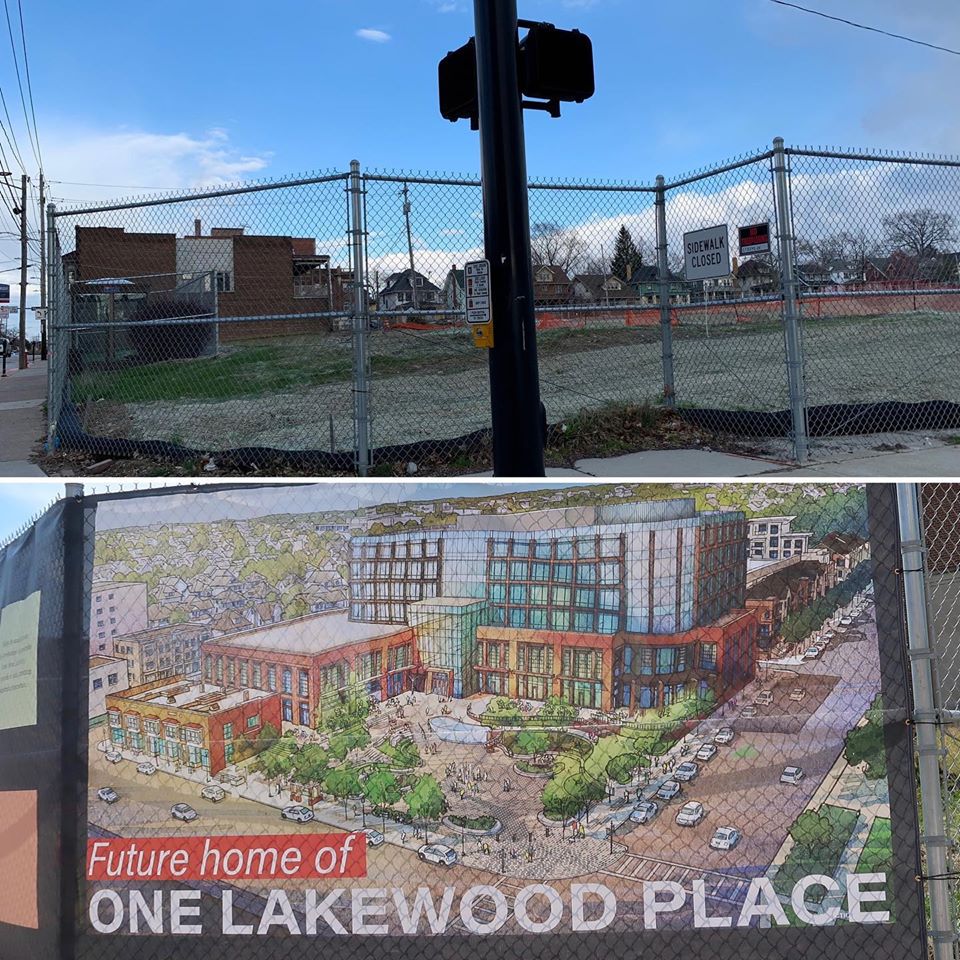The revitalization of Cleveland’s Detroit-Shoreway neighborhood continues to spread west. To the north, Edgewater Park and its healthy namesake neighborhood have improved in recent years. And to the west, Lakewood has seen Greater Cleveland’s fastest-growing real estate prices along with new housing development.
In between all of this is a left-behind area surrounding the West Boulevard-Cudell rapid transit station and Cudell Recreation Center. But that could start changing thanks to a planning effort underway by the Westown Community Development Corp. called the West Boulevard-Detroit Avenue Neighborhood Plan.
The station and recreation center are principal anchors of the Cudell neighborhood. They depend on pedestrian accessibility and could help attract pedestrian-friendly development. To do so will first require making that area more hospitable to pedestrians. That simple goal is the foundation of Westown’s development masterplan.
The roadways around the Greater Cleveland Regional Transit Authority (GCRTA) station are designed to move a high volume of cars as quickly as possible. But they were designed that way long before Interstate 90 was built, when a combination of streets including Triskett Road, Berea Road, Detroit Road, West Boulevard, Baltic Road and the West Shoreway was the fastest way for motorists to reach downtown Cleveland from the West Side.
| The area outlined in orange is the target area for Westown Community Development Corp.’s West Boulevard-Detroit Avenue Neighborhood Plan (City Architecture). |
And they were designed that way with little regard to safe pedestrian access to the rapid transit line, even though most transit customers typically begin/end their trips as pedestrians. Instead, the West Side Red Line was built in the 1950s and 60s primarily as a park-n-ride service for downtown commuters.
Depending on park-n-ride traffic tends to limit GCRTA’s Red Line to two types of riders — those heading downtown in the morning and those returning to their cars in the evening. That’s a big reason why Cleveland’s rail system is so lightly used, according to a 2017 Transit- Oriented Development study by the Northeast Ohio Areawide Coordinating Agency (NOACA) and its consultant AECOM.
With most stations surrounded by big parking lots and big roads, there was little opportunity to develop a “low-mileage lifestyle” popular with young people and urbanists. That lifestyle is made possible by Transit Oriented Development (TOD) — dense, neighborhood-scale mixed-use districts of housing, commercial and recreational uses within a comfortable walk of each station.
TODs tend to produce more pedestrian activity and transit ridership, with riders traveling on the rail line throughout the day and night for a variety of reasons — work, school, shopping, medical appointments, nightlife, sporting events and so on, according to the NOACA study.
The car traffic that once poured past the West Boulevard station has been gone for decades. But the seven-lane wide Detroit Avenue by the station remains, as do intersections with angled streets or gently curving lanes so cars can turn corners faster.
“They’re death-defying traffic patterns,” said Westown Executive Director Rose Zitiello. “It’s a hazardous situation for pedestrians.”
It’s also proven to be a deterrent to TOD investment surrounding the West Boulevard station. Numerous transit-supportive developments have been built, are under construction or planned in Greater Cleveland in recent years. But not so much at the West Boulevard station.
“At the time, the NOACA study was trying to attract development,” she said. “It (the study) showed there was a market for it. But after the (study’s) recommendations were issued, there wasn’t much interest from developers. Many of their findings were very well thought out. So we really wanted to build on that TOD study.”
| This is a design concept for calming traffic on Detroit Avenue past the rapid transit station and Cudell Recre- ation center (City Architecture). |
For the study, Westown organized an informal stakeholders group comprised of NOACA, Detroit Shoreway Community Development Organization (DSCDO), City of Cleveland, Cleveland Metropolitan School District (CMSD), West Boulevard resident Tom Yablonski who also serves as executive vice president of the Doantown Cleveland Alliance, The Palazzo restaurant and Environmental Design Group. Westown hired City Architecture as its project consultant.
Foremost among the early, preliminary recommendations is to improve the transportation experience at West Boulevard and Detroit that lays a foundation for TOD. Small-scale traffic-calming measures such as narrowing Detroit and squaring off its intersections with Berea and West Boulevard are possible recommendations, Zitiello said.
The plan will also identify potential development types for nearby underutilized properties and build off recent/ongoing investment and planning in the study area. The goal is to make a strong case for funding of the recommendations that come out of the planning work, study documents show.
Among the public investments occurring in the area is the nearly $45 million in infrastructure improvements GCRTA has been making to the Red Line tracks, retaining walls and electrical systems between Tower City and Hopkins Airport, GCRTA’s current five-year capital program shows. The transit authority is also early in the process of replacing its aging rail cars with new trains. That program is estimated at between $250 million and $300 million.
At the last study stakeholders meeting March 9, Hollie Dellisanti, CMSD’s executive director of architectural services for capital projects, said the CMSD board has approved spending $34 million to address facilities at he Marion C. Seltzer K-8 School, 1468 W. 98th St. It hasn’t been decided if the district will rebuild or replace the school. Seltzer School is located next to the Cudell Recreation Center.
Amid mostly small-scale private investments in the Westown-Cudell area, a big investment last year could soon produce hundreds of new jobs. Weston Group built a 168,750-square-foot warehouse as the first phase of Madison Industrial Park, 10801 Madison Ave. Several sources said this week that eCommerce giant Amazon will be the tenant for that warehouse as well as for a second, proposed warehouse to be built by Weston.
“I hope it’s true,”?said Ward 11 Councilman Brian Mooney. “It will benefit many businesses in the area. I do know that Amazon is the rumor and that Weston was still trying to negotiate with one or more people.”
And last November, a California-based group bought the Chicle Apartments and 10 neighboring townhouses at 10307-10335 Detroit Ave., just west of the West Boulevard station. But the investor group’s intentions remain unknown.
 |
| The Greater Cleveland Regional Transit Authority’s West Boulevard-Cudell Red Line rapid transit station (Wikimedia). |
In 2013, Marous Brothers renovated Boulevard Terrace and Neal Terrace, 10107 and 8811 Detroit Ave., respectively, for $10 million total. Boulevard Terrace is a 116-unit complex of row houses built between 1895 and 1917 while Neal Terrace is a 48-unit row house complex built in 1907. Both are within an easy walk of the West Boulevard station.
Next steps including fine-tuning the case for more public and private investment in the neighborhood. City Architecture will test its recommendations with the study’s stakeholder group. The proposed findings will then be delivered to the City Planning Commission for its possible adoption. If the commission adopts the plan, it can then seek a mix of local, state and possibly federal grants to implement it.
Zitiello said the goal is to wrap up the planning work by June.
“Then we’ll go for some TLCI (Transportation for Livable Communities’) funding” from NOACA, she said. “There’s no money for this year so we’re hoping to get it for 2021 to develop some project-level plans for traffic calming, better signage and roadway changes.”






Comments are closed.